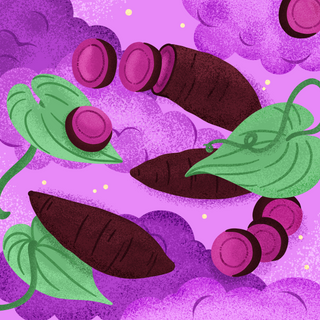This native yam of the Philippines has an iconic purple hue, and subtle sweet flavor that's a little nutty, a little creamy, and very irresistible. Our Ube Boba finishes with a caramelized note of brown sugar reminiscent of Taiwanese tapioca pearls (a.k.a boba).
A little indulgent, but not too sweet. With CBN, it's the perfect bite-sized treat before tucking in for a good night's sleep.
Certificate of Analysis: PASSED
This native yam of the Philippines has an iconic purple hue, and subtle sweet flavor that's a little nutty, a little creamy, and very irresistible. Our Ube Boba finishes with a caramelized note of brown sugar reminiscent of Taiwanese tapioca pearls (a.k.a boba).
A little indulgent, but not too sweet. With CBN, it's the perfect bite-sized treat before tucking in for a good night's sleep.
Certificate of Analysis: PASSED
Crafting the flavors
We wish we were exaggerating when we say we ate every ube product on the market when deciding how best to capture ube's subtle flavor in gummy form. Cookies, jams, cakes, ice cream—everything. We landed it with a caramelized, brown sugar finish that reminded us of Ube Boba in the best way.

CULTURAL STORY
Many can only describe this flavor as “purple"
The purple hue of this sweet yam has made it popular across modern American treats, but many can only describe the flavor as “purple.”
We don’t know what purple tastes like, but we know this purple yam, native to the Philippines, has a nutty and creamy flavor and a rich, meaningful place in our country’s cuisine.
Ube halaya is a popular dessert made by cooking down grated ube with coconut milk and then adding condensed milk and butter until it becomes a delicious, jammy paste.








